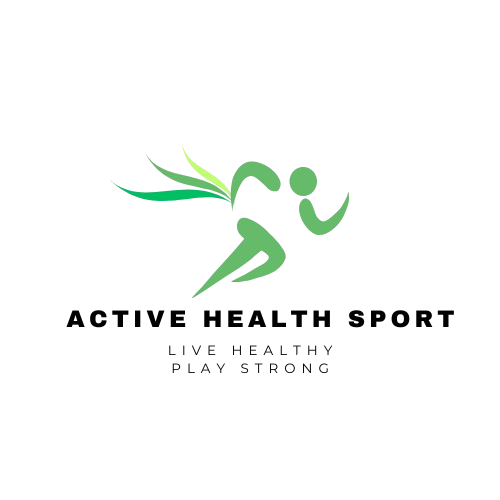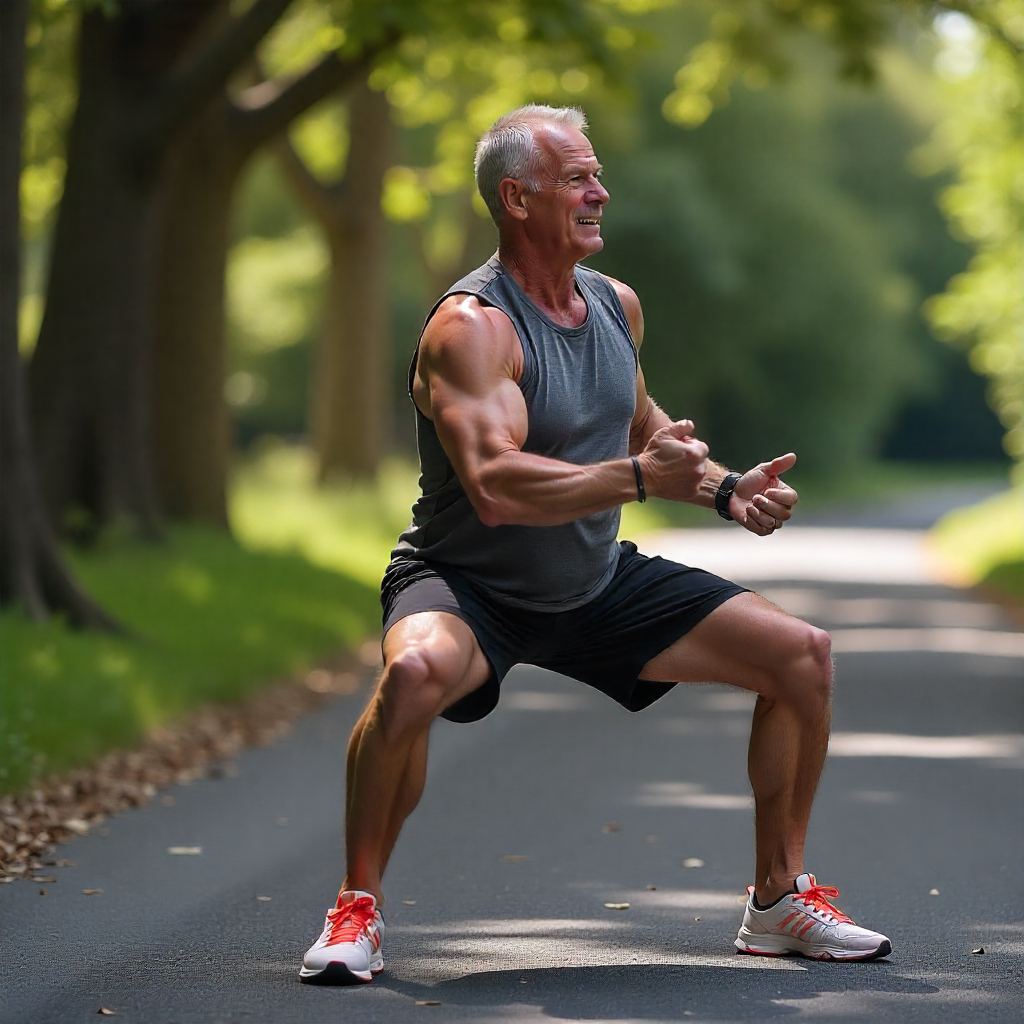The Turning Point at 40
Something subtle happens when the body crosses 40.
Not overnight, but gradually, in ways that are easy to ignore. You bend to tie your shoes and feel stiffness in your hips. You reach for something overhead and notice tight shoulders. A simple jog leaves your knees complaining for days.
Mobility, once effortless, becomes something you have to maintain intentionally. So, there’s a talk in everyone’s mind: “how to rebuild mobility“.
This is not aging’s punishment. It’s simply the body adapting to decades of patterns: sitting too long, moving too little, repeating narrow ranges of motion.
But here’s the empowering truth:
You can rebuild mobility at any age, even after 40, 50, or 60, with the right movement strategy.
The latest research in exercise science, fascia dynamics, and neuroplasticity shows that flexibility, strength, and coordination can all be restored when you combine mobility-specific training, recovery routines, and lifestyle consistency.
In this blog, we’ll explore how real people did it, what science says about movement restoration, and the step-by-step framework you can follow to rebuild a mobile, pain-free body after 40.
Why Mobility Declines After 40
Mobility isn’t just about flexibility. It’s the freedom and control of movement, the ability to move joints smoothly through a full range under control.
After age 40, several biological and lifestyle factors begin to reduce that capacity.
1. Muscle Elasticity Decline
Collagen fibers lose elasticity, and muscle fascia becomes thicker and less hydrated. This limits muscle glide and stretch potential.
2. Reduced Synovial Fluid
Joint lubrication decreases, leading to stiffness, cracking, and friction.
3. Loss of Neuromuscular Coordination
The brain loses some of its efficiency in recruiting muscles, especially stabilizers that protect joints during movement.
4. Sedentary Lifestyles
Long hours of sitting shorten the hip flexors and weaken the glutes, two of the most critical muscle groups for posture and mobility.
5. Fear of Movement (Kinesiophobia)
After injury or stiffness, people tend to move less, which accelerates mobility loss, a cycle researchers call the “deconditioning loop.”
According to the American Journal of Sports Medicine (2024), mobility decline is 60% behavioral and 40% biological, meaning most limitations are reversible.
Case Study 1: The Architect Who Got His Shoulders Back
Profile:
- Name: Luis M., 47
- Occupation: Architect (mostly desk work)
- Complaint: Shoulder stiffness, reduced reach, mild neck pain
Story:
Luis realized he couldn’t lift his arms above shoulder height without discomfort. He’d stopped playing tennis, his lifelong hobby, because of it.
Strategy Used:
- 10-minute daily “shoulder mobility ritual”
- Focus on thoracic spine extensions, banded dislocates, wall slides, and controlled articular rotations (CARs).
- Weekly deep tissue release for chest and upper back.
Results (after 8 weeks):
- Regained full overhead range
- Shoulder pain eliminated
- Back on the tennis court
“Mobility work taught me control, not just stretch. I didn’t need to be flexible, I needed to move intelligently.”
Also Read the Latest: Why Mobility Is the Real Strength You’re Missing in Fitness
The Science of Rebuilding Mobility
Mobility restoration after 40 is rooted in biomechanics + neuroplasticity, retraining both body and brain to move freely again.
1. Fascia Remodeling
Fascia, the connective tissue network, responds to consistent tension and movement variety.
A 2023 Journal of Human Kinetics study showed that just 8 weeks of dynamic stretching increased fascial elasticity by 27% in adults over 40.
2. Motor Control Re-Education
Slow, controlled joint rotations (like CARs) retrain the nervous system to activate stabilizers, preventing stiffness and imbalance.
3. Cellular Hydration and Recovery
Mobility drills improve lymphatic flow and nutrient delivery, rehydrating fascia and restoring “slide and glide” between tissues.
4. Hormonal and Metabolic Benefits
Movement stimulates human growth hormone (HGH) and synovial fluid secretion, essential for joint longevity.
The 4 Pillars of Functional Mobility After 40
| Pillar | Focus | Goal | Example Work |
| 1. Controlled Movement | Rebuild joint integrity | Smooth, full-range motion | CARs, joint circles |
| 2. Myofascial Release | Free tight tissue layers | Improve flexibility & flow | Foam rolling, massage balls |
| 3. Dynamic Flexibility | Integrate strength + range | Real-life mobility | Leg swings, arm circles, hip openers |
| 4. Active Stability | Reinforce control | Injury prevention | Balance drills, single-leg work |
Each pillar complements the others, together, they restore the body’s natural design for movement.
Case Study 2: Reclaiming the Hips at 52
Profile:
- Angela P., 52-year-old nurse
- Long shifts, low back pain, tight hips
- Couldn’t sit cross-legged anymore
Approach:
- Began a 6-week “Hip Rebuild Routine”:
- Hip 90/90 stretches
- Glute bridges and hip thrusts
- Deep squat holds and pelvic tilts
- Foam rolling twice weekly
Results:
- Full hip mobility restored
- Back pain reduced by 80%
- Could perform yoga again
“It wasn’t about flexibility, it was about strength where I was weak and release where I was tight.”
How Long Does It Take to Rebuild Mobility?
Mobility restoration follows a tissue adaptation timeline, similar to strength training.
| Phase | Duration | What Happens |
| Phase 1: Awareness | 1–3 weeks | Identify stiffness, retrain posture |
| Phase 2: Adaptation | 4–8 weeks | Fascia hydration, muscle reactivation |
| Phase 3: Integration | 8–12 weeks | Range of motion improves, joints stabilize |
| Phase 4: Longevity | 12+ weeks | Mobility becomes natural habit |
In most adults over 40, measurable improvement happens within 6 weeks of consistent practice.
Also Read the Latest: Why Your Fitness Plateau Is More About Movement Quality
Essential Functional Strategies (Backed by Research)
1. Start Small, Move Often
Micro-mobility, 3–5 minutes every few hours, is more effective than a single long stretch session.
2. Train End-Range Control
Don’t just stretch; strengthen at the end of your joint’s range.
This builds resilience and prevents re-tightening.
3. Restore Breathing Mechanics
Breathing patterns affect mobility. Diaphragmatic breathing releases the psoas (hip flexor) and reduces spinal tension.
4. Use “Contrast Mobility”
Alternate between deep static holds and dynamic flows, this reprograms the nervous system for stability and freedom.
5. Hydrate and Recover
Joint health depends on water intake and sleep quality.
Dehydration stiffens fascia; 10% loss of water = 25% reduction in tissue elasticity.
Case Study 3: Functional Mobility for a Busy CEO (Age 55)
Profile:
- Rahim A., 55, tech executive
- 10+ hours sitting daily
- Suffered from frozen shoulders and a tight lower back
Protocol Used:
- 15-min morning mobility flow
- Standing desk + walking calls
- Weekly mobility class with resistance bands
Outcome (12 weeks):
- Regained full shoulder range
- Back pain eliminated
- Reported “younger energy and posture”
“It felt like my body started breathing again.”
Weekly Mobility Blueprint (Over 40)
| Day | Focus | Routine (Example) |
| Mon | Hip + Spine | 90/90s, cat-cows, glute bridges |
| Tue | Shoulders + Thoracic | Wall slides, thread the needle, band pull-aparts |
| Wed | Active Recovery | 20-min walk + foam rolling |
| Thu | Lower Body Flow | Lunges, leg swings, deep squat hold |
| Fri | Full-Body Mobility | Controlled articular rotations |
| Sat | Yoga or Stretch Session | 30-min flow |
| Sun | Rest / Light Walk | Maintain tissue hydration |
Nutrition & Hydration for Mobility
Mobility isn’t only movement, it’s cellular health.
- Hydration:
Fascia and joints are 70-80% water. Drink 3-4 liters daily (depending on body size and activity). - Collagen & Gelatin:
Support connective tissue elasticity. - Omega-3s & Antioxidants:
Reduce inflammation in joints. - Magnesium & Potassium:
Improve muscle relaxation and nerve function.
Tools That Accelerate Recovery
| Tool | Purpose |
| Foam Roller | Myofascial release, blood flow |
| Massage Ball | Spot pressure, muscle release |
| Resistance Bands | Controlled mobility drills |
| Yoga Block | Support for deep stretches |
| Heat Therapy | Tissue pliability |
| Percussion Gun | Fascia hydration, recovery |
The Role of Sleep in Rebuilding Mobility
During deep sleep, your body releases growth hormone, critical for tissue repair.
A 2024 Sleep Physiology Review found that people sleeping under 6 hours nightly had 30% slower recovery in joint range gains.
Mobility improves faster when your recovery is optimized.
Also Read the Latest: How Desk Workouts Keep You Active at a Sedentary Job
Mental Mobility: Overcoming the Fear of Movement
After 40, many individuals subconsciously restrict motion out of fear, fear of pain, injury, or failure.
But research shows that safe, graded exposure to movement reduces both pain perception and anxiety.
Dr. Peter Attia (2024) writes:
“Mobility is not just mechanical, it’s neurological. You must retrain the brain to trust movement again.”
Mindful mobility, slow breathing, and intentional motion rebuild confidence and awareness.
Final Recommendation: Your Next Decade Can Be Your Most Mobile
Mobility isn’t youth, it’s maintenance.
It’s a reflection of how well you care for your joints, fascia, and nervous system.
After 40, the goal isn’t to move like you’re 20, it’s to move like you were designed to.
Functional movement, mindful recovery, and small consistent effort rebuild what time has tightened.
Every stretch, twist, and deep breath is a vote for vitality.
FAQs
Am I too old to rebuild flexibility and mobility?
Absolutely not. Mobility and flexibility can improve at any age with consistent effort. Research shows that regular stretching and dynamic movement restore joint range and muscle elasticity even in older adults.
How often should I train mobility?
Ideally, practice mobility 10-20 minutes daily or at least 4-5 times per week. Frequent, gentle sessions create lasting results by improving body awareness, posture, and movement control over time.
Should I stretch before or after workouts?
Before workouts, focus on dynamic mobility to prepare joints and muscles for movement. After training, use static stretches to aid muscle recovery, reduce stiffness, and improve long-term flexibility.
Can mobility work replace regular workouts?
Not entirely. Mobility training complements strength and cardio exercises by improving joint health, coordination, and stability. It enhances your performance in workouts rather than replacing physical conditioning altogether.
How do I know I’m improving in mobility?
You’ll notice progress when movements feel smoother, posture improves, and stiffness decreases. Many people also report faster recovery, fewer aches, and increased confidence during daily or athletic activities.
What’s the best time of day for mobility training?
Morning sessions wake up stiff joints and boost circulation, while evening routines help relax the body for better sleep. Choose whichever time best fits your schedule and consistency.
You might also like the following…
- Why a Digital Detox Before Bed Can Fix Your Sleep Faster
 The Modern Sleep Thief Hiding in Your Hand In a world where we check our phones hundreds of times a day, it’s no surprise our sleep has taken a hit.Most people scroll… Read more: Why a Digital Detox Before Bed Can Fix Your Sleep Faster
The Modern Sleep Thief Hiding in Your Hand In a world where we check our phones hundreds of times a day, it’s no surprise our sleep has taken a hit.Most people scroll… Read more: Why a Digital Detox Before Bed Can Fix Your Sleep Faster - How to Align Your Circadian Rhythm for All-Day Energy Gains
 Why You Feel Tired Even After Sleeping Enough Have you ever slept for eight hours and still felt groggy the next morning?The issue might not be how long you sleep, but when… Read more: How to Align Your Circadian Rhythm for All-Day Energy Gains
Why You Feel Tired Even After Sleeping Enough Have you ever slept for eight hours and still felt groggy the next morning?The issue might not be how long you sleep, but when… Read more: How to Align Your Circadian Rhythm for All-Day Energy Gains - Electrolytes vs. Water: What Active Adults Must Know
 Beyond Water, The Hidden Key to True Hydration Most adults know the rule, “Drink more water.”But few realize that hydration isn’t just about fluid intake. It’s about electrolyte balance, the invisible electrical… Read more: Electrolytes vs. Water: What Active Adults Must Know
Beyond Water, The Hidden Key to True Hydration Most adults know the rule, “Drink more water.”But few realize that hydration isn’t just about fluid intake. It’s about electrolyte balance, the invisible electrical… Read more: Electrolytes vs. Water: What Active Adults Must Know

Kait Amazra is the founder and lead writer of Active Health Sport. With over 25 years of experience in health, fitness, and wellness education, Kait combines professional expertise with a passion for helping people live stronger, healthier, and more balanced lives.
As a licensed health and fitness professional, Kait has worked alongside industry experts to deliver evidence-based insights on physical activity, nutrition, recovery, and holistic well-being. Through Active Health Sport, Kait’s mission is to make trusted, practical, and science-backed health information accessible to everyone, from beginners building new habits to athletes seeking peak performance.

